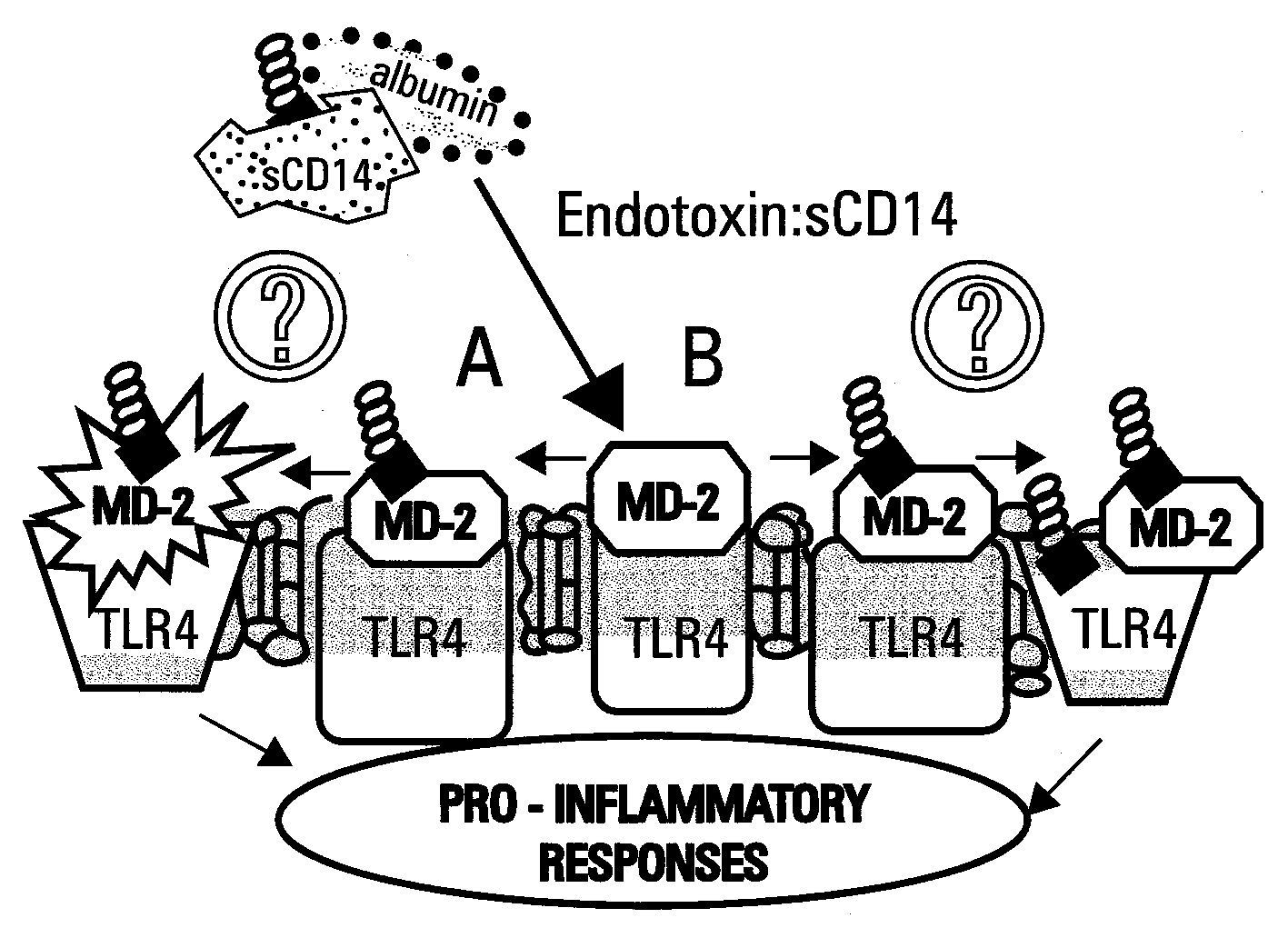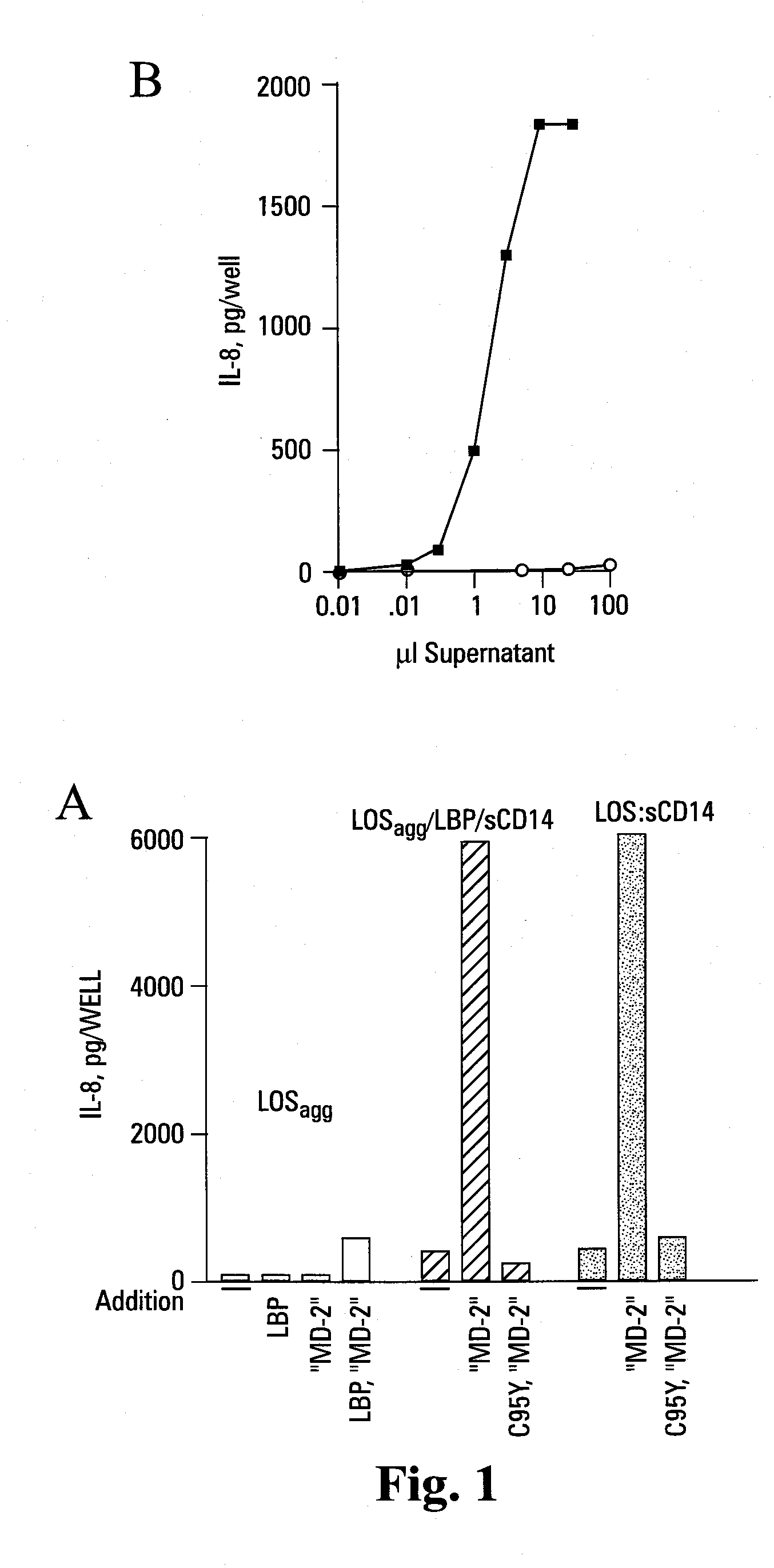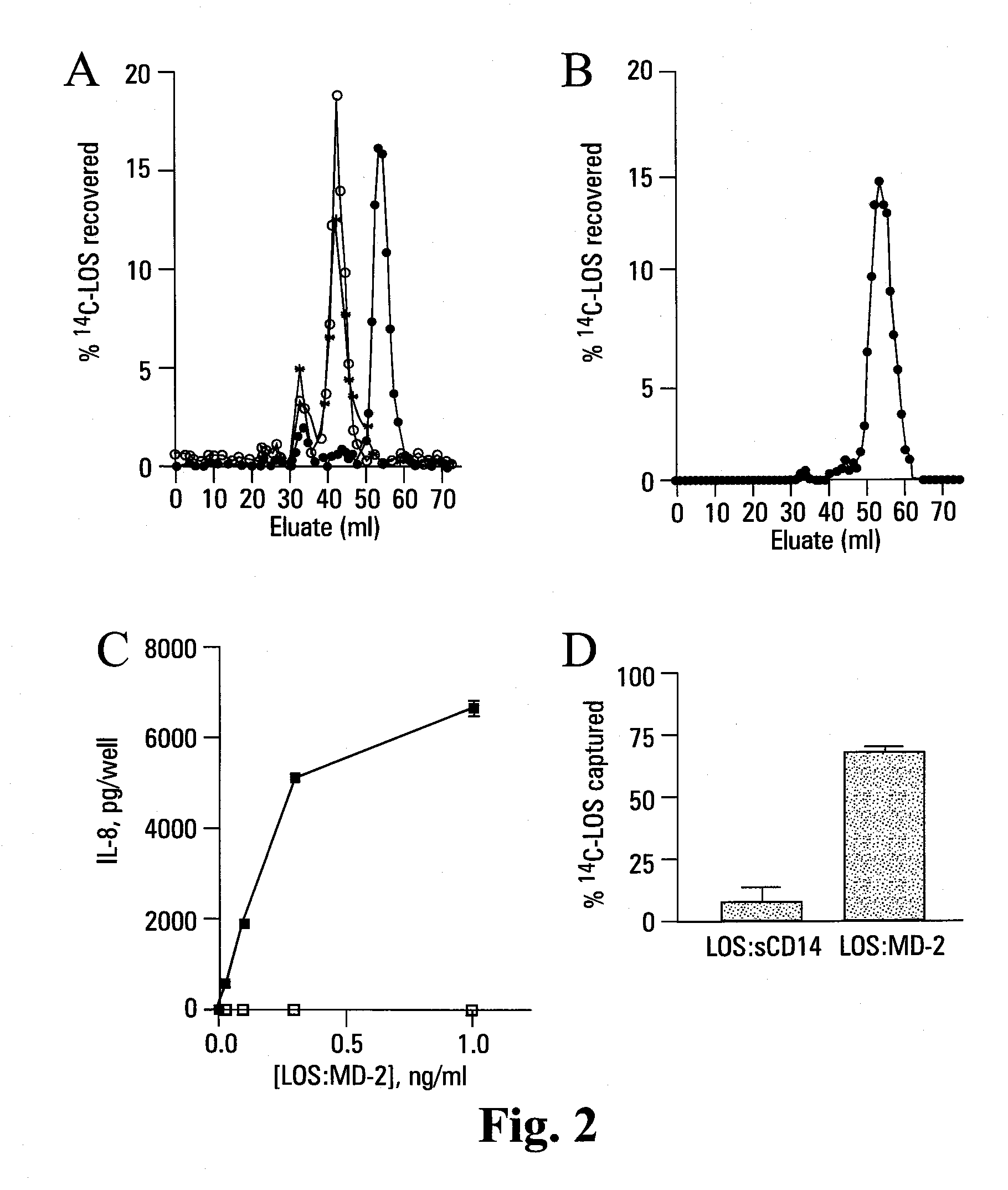Isolated complexes of covalently cross-linked endotoxin and modified md-2
a covalently crosslinked endotoxin and complex technology, applied in the field of isolating complexes of covalently crosslinked endotoxin and modified md2, can solve the problems of severe, even life-threatening pathology, and achieve the inhibition of tlr4-dependent activation, inhibit tlr4-dependent activation of cells, and stimulate the effect of tlr4-dependent activation
- Summary
- Abstract
- Description
- Claims
- Application Information
AI Technical Summary
Benefits of technology
Problems solved by technology
Method used
Image
Examples
example 1
Isolation of an Endotoxin:MD-2 Complex
[0123]Reported herein is the purification of a stable, monomeric, bioactive endotoxin-MD-2 complex generated by treatment of endotoxin:sCD14 with recombinant MD-2. Efficient generation of this complex occurred with pM amounts of endotoxin and ng / ml amounts of MD-2 and, under these conditions, required the presentation of endotoxin to MD-2 as a monomeric endotoxin:CD14 complex. Higher concentrations of the monomeric endotoxin:MD-2 complex can be generated by co-incubation of higher concentrations of soluble MD-2 and monomeric endotoxin:CD14 complex. TLR4-dependent delivery of endotoxin to human embryonic kidney (HEK) cells and cell activation at pM concentrations of endotoxin occurred with purified endotoxin:MD-2 complex, but not purified endotoxin aggregates LBP and / or sCD14. The presence of excess MD-2 inhibited delivery of endotoxin:MD-2 to HEK / TLR4 cells and cell activation. These findings demonstrate that TLR4-dependent activation of host ce...
example 2
MD-2 Expression in Human Airway Epithelia
[0147]The results presented herein demonstrate that in well-differentiated primary cultures of human airway epithelia TLR4, but little or no MD-2, is expressed. These cells are relatively unresponsive to added endotoxin even in the presence of LBP and CD14. However, the responsiveness of these cells to endotoxin is markedly amplified by either the endogenous expression or the exogenous addition of MD-2, indicating that the constitutively low levels of MD-2 expression in these cells at “rest” is important in maintaining their hypo-responsiveness to endotoxin. Changes in MD-2 expression in the airway epithelium and / or neighboring cells can be achieved by exposure of these cells to specific bacterial and host products and can thereby regulate airway responsiveness to endotoxin.
[0148]Human Airway Epithelia are Hyporesponsive to Applied Endotoxin
[0149]Nontypeable Haemophilus influenza (NTHi) is a common commensal, and sometimes a pathogen, of the ...
example 3
Activities of Endotoxin:MD-2 Complexes
[0185]Endotoxin species with potent pro-inflammatory activity are typically hexa-acylated. That is, the lipid A region contains 6 covalently linked fatty acids, including 4 mol / mol of 3-OH fatty acids linked directly to the di-N-acetylglucosamine backbone of lipid A and 2 mol / mol non-hydroxylated fatty acids (NFA) that are linked to two of the four 3-OH fatty acids via an ester bond with the 3-OH group. The presence of the NFA is important for potent bioactivity of endotoxin. Either enzymatic release of the 2 NFA or disruption of the genes (htrB, msbB) encoding the two acyltransferases needed for their biosynthetic incorporation yields a tetra-acylated endotoxin derivative that lacks pro-inflammatory agonist activity and, instead, antagonizes wild-type endotoxin activity. Removal of just one of the two NFA (i.e. msbB mutant; penta-acylated endotoxin species) also typically exhibits markedly reduced agonist and partial antagonist activity toward ...
PUM
| Property | Measurement | Unit |
|---|---|---|
| volume | aaaaa | aaaaa |
| real time PCR | aaaaa | aaaaa |
| pH | aaaaa | aaaaa |
Abstract
Description
Claims
Application Information
 Login to View More
Login to View More - R&D
- Intellectual Property
- Life Sciences
- Materials
- Tech Scout
- Unparalleled Data Quality
- Higher Quality Content
- 60% Fewer Hallucinations
Browse by: Latest US Patents, China's latest patents, Technical Efficacy Thesaurus, Application Domain, Technology Topic, Popular Technical Reports.
© 2025 PatSnap. All rights reserved.Legal|Privacy policy|Modern Slavery Act Transparency Statement|Sitemap|About US| Contact US: help@patsnap.com



